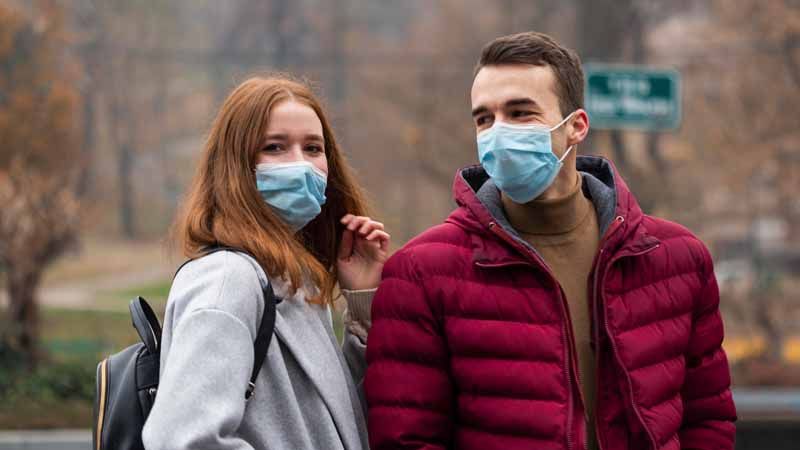A Comprehensive Guide to Eye Safety
- 10 months ago
Our eyes are a window to the world, helping us experience life's vibrant colors, breathtaking views, and intricate details. Yet, they are also among the most delicate and vulnerable organs in our body. Eye safety is not just a priority for specific environments like workplaces or sports fields; it is essential in daily life. By understanding the common risks and taking proactive steps, you can safeguard your vision for years.
In this blog, we’ll dive into the importance of eye safety, identify common risks, and provide essential tips to prevent eye injuries effectively.
Why Eye Safety Matters?
Your eyes are exposed to countless daily threats, many of which go unnoticed until they cause harm. Protecting your eyes is crucial because:
- Injuries can be severe: Eye trauma can lead to temporary or permanent vision loss.
- Prevention is better than cure: Most eye injuries and conditions can be avoided with simple precautions.
- Healthy vision supports quality of life: Your ability to work, play, and connect with others depends heavily on your eyesight.
By adopting safety measures, you not only reduce the risk of injury but also support overall eye health.
Also Read: Is Too Much Screen Time Harmful to Our Eyes?
Common Risks to Eye Health
Here are some of the most frequent scenarios where your eyes could be at risk:
1. Digital Eye Strain
In today’s digital world, prolonged screen time can cause digital eye strain. Symptoms may include dry eyes, headaches, impaired vision, and discomfort. This condition is increasingly common among professionals and students alike.
2. Workplace Hazards
Industries like construction, manufacturing, and healthcare often expose workers to flying debris, chemical splashes, or intense light, making eye injuries a significant concern.
3. Sports-Related Injuries
High-impact sports like cricket, basketball, and tennis can result in trauma from fast-moving objects or collisions. Eye injuries during sports are common yet preventable.
4. Household Accidents
From cooking splatters to cleaning with strong chemicals, the home has potential risks for your eyes. Even seemingly harmless activities like gardening or DIY projects can pose threats.
5. UV Exposure
Overexposure to ultraviolet (UV) rays can harm your eyes, leading to cataracts, macular degeneration, or corneal damage. UV rays are present year-round, making protection essential even on cloudy days.
Essential Tips to Prevent Eye Injuries
Prevention is the best cure, and safeguarding your eyes is simpler than you might think. Here are some practical tips for maintaining optimal eye safety:
1. Wear Protective Eyewear
- Use safety goggles or glasses in hazardous environments like construction sites or laboratories.
- Opt for polycarbonate sports goggles during high-impact activities.
2. Practice Digital Screen Safety
- Follow the 20-20-20 rule: Every 20 minutes, look at something 20 feet away for 20 seconds to reduce strain.
- Adjust screen brightness and positioning to minimize glare and maintain a comfortable viewing distance.
3. Shield Your Eyes from UV Rays
- Purchase sunglasses that completely prevent UVA and UVB radiation.
- Combine sunglasses with a wide-brimmed hat for added UV protection.
4. Keep Your Eyes Clean
- Before touching your face or eyes, wash your hands.
- Remove makeup thoroughly before bed to prevent infections.
- Clean your contact lenses as per your eye doctor’s instructions.
5. Ensure Adequate Lighting
- Use proper lighting while reading, working, or studying to avoid straining your eyes.
- Position lights to reduce glare on screens or work surfaces.
6. Handle Chemicals with Care
- Always read instructions and use appropriate protective gear when dealing with cleaning agents or other chemicals.
- Work in well-ventilated areas to avoid irritation from fumes.
7. Schedule Regular Eye Checkups
- Regular visits to an eye doctor can help detect early signs of conditions like glaucoma or macular degeneration.
- Comprehensive eye exams are essential if you have existing health conditions like diabetes.
8. Teach Eye Safety to Children
- Educate kids on the importance of not rubbing their eyes with dirty hands.
- Supervise their use of sharp objects and encourage safe play practices.
Also Check: Exercises to Help You Relax Your Eyes
First Aid for Eye Injuries
In case of an eye injury, prompt and appropriate action can make a significant difference. Here's what to do:
- For Foreign Particles: Do not rub the eye. Rinse carefully with clean water or a saline solution.
- For Chemical Exposure: Flush the eye with water for at least 15 minutes. Seek medical help immediately.
- For Blunt Trauma: Apply a cold compress to reduce swelling without putting pressure on the eye.
- For Cuts or Punctures: Avoid washing the eye. Cover it with a clean shield or cloth and seek emergency medical attention.
Final Thoughts
Your vision is irreplaceable, and taking steps to protect it is an investment in your future. From wearing protective gear and practicing digital safety to scheduling regular checkups, these habits can significantly reduce your risk of eye injuries and maintain your eyesight for years.









